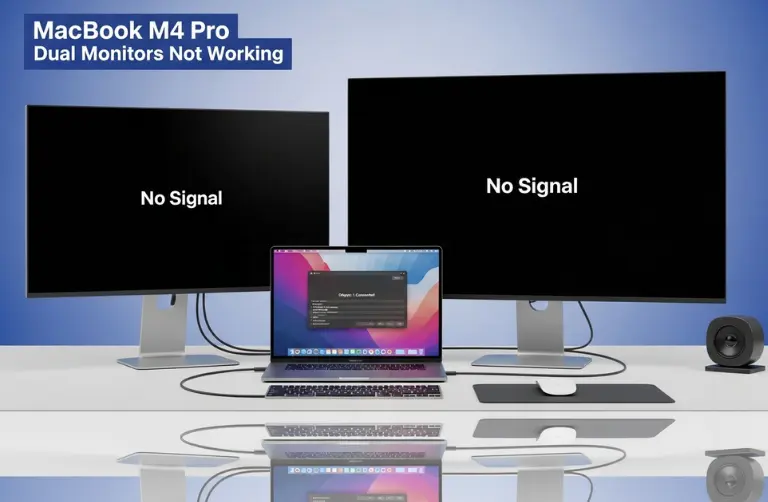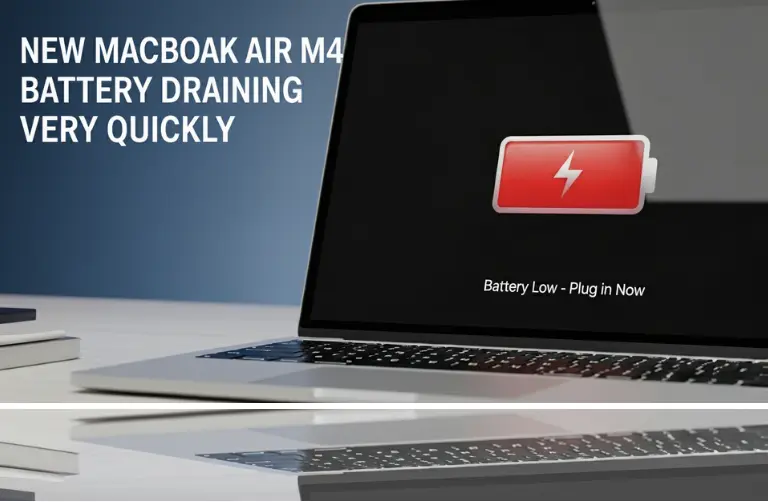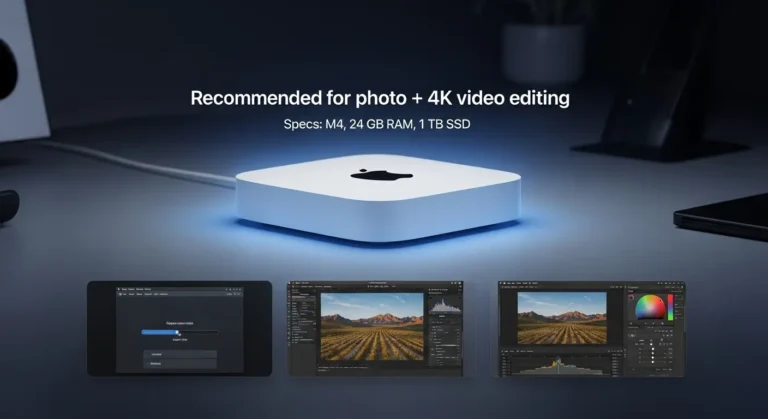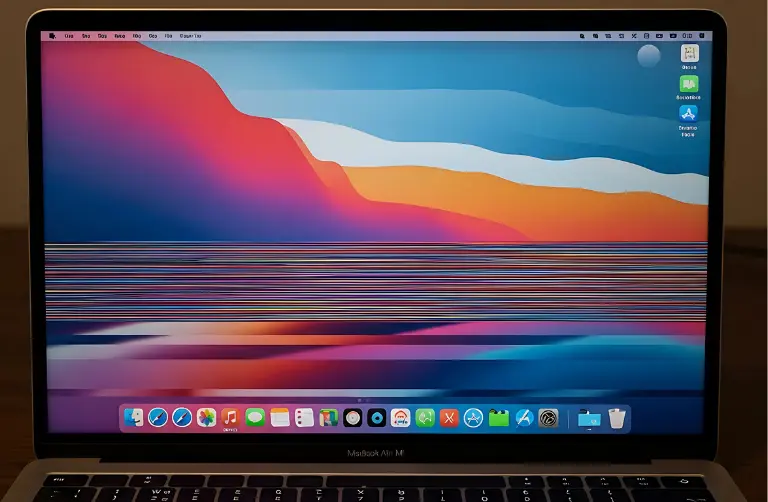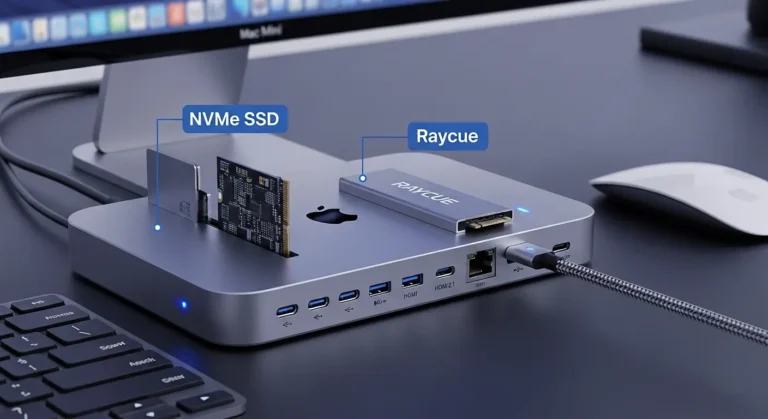Why Won’t My Mac Detect the External CD Drive?
When your Mac does not recognize an external CD/DVD drive, it typically indicates a connection, software, or compatibility issue. Here are the most common reasons:
- Loose or faulty cables – Damaged USB-C or USB cables can stop the drive from being detected.
- macOS settings – Sometimes, Finder preferences or system settings block the display of external drives.
- Insufficient power supply – Some CD drives need extra power to run, especially on slim MacBooks.
- Outdated macOS or drivers – Compatibility problems often occur after a macOS update.
- Hardware conflicts – Other peripherals or hubs may interfere with the external drive.
- Drive malfunction – In rare cases, the external CD/DVD drive itself may be faulty.
In a fast-paced city like Dubai, where professionals frequently move between offices, cafes, and coworking spaces, carrying multiple peripherals can increase the likelihood of connection errors.
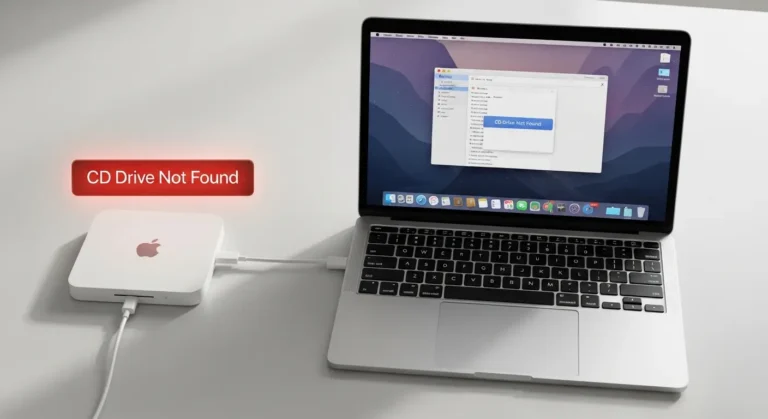
Step-by-Step Fixes for an External CD Drive Not Showing on a Mac
Before taking your Mac to a service centre, try these simple troubleshooting methods.
1. Check Cable and Power Connections
- Ensure the cable is plugged in firmly to both the Mac and the CD drive.
- If you are using a USB-C to USB adapter, test with another one to rule out adapter failure.
- Some external CD drives need a powered USB hub. Try connecting one to see if it solves the issue.
2. Verify Finder Preferences
Sometimes the drive is working, but it does not appear due to the settings.
Steps:
- Open Finder.
- Go to Finder > Settings > Sidebar.
- Make sure CDs, DVDs, and iOS Devices are checked.
This ensures the drive appears in Finder when connected.
3. Restart Your Mac
A simple restart can clear minor system glitches. Disconnect the drive, restart the Mac, and reconnect it after the system is fully loaded.
4. Try Another USB Port or Mac
If your MacBook has multiple ports, switch to a different one.
- On Mac desktops, try both front and back USB ports.
- Connect the drive to another Mac to confirm whether the issue is with the drive or your system.
5. Reset SMC and PRAM
System Management Controller (SMC) and PRAM (Parameter RAM) control hardware functions. Resetting them often resolves detection issues.
To reset SMC on Intel Macs:
- Shut down your Mac.
- Unplug the power cord.
- Please wait 15 seconds, then plug it back in and turn it on.
To reset PRAM:
- Restart your Mac.
- Immediately hold down Command + Option + P + R.
- Keep holding for 20 seconds, then release.
6. Update macOS
Outdated software can block hardware recognition.
- Go to System Settings > General > Software Update.
- Install the latest version to ensure maximum compatibility.
7. Test with Disk Utility
If the drive powers on but does not show in Finder, try Disk Utility.
Steps:
- Go to Applications > Utilities > Disk Utility.
- Look for the external CD drive in the sidebar.
- If it appears, try mounting it manually.
8. Use Third-Party Apps
Some external drives are not fully supported by macOS. In such cases, software like VLC Media Player or Roxio Toast can help access the CD/DVD content.
Prevention Tips
Once you fix the issue, it is best to prevent it from happening again.
- Use Apple-certified USB-C adapters and hubs for stable connections.
- Avoid connecting too many peripherals at once.
- Keep your macOS up to date with the latest version.
- Store your external CD drive in a safe place to avoid cable damage.
- For professionals working on critical projects in Dubai’s media and IT industries, consulting experts like Azizi Technologies UAE ensure reliable Mac setups and a smooth workflow.
Why This Matters for Dubai Users
Although cloud storage and streaming are popular, many businesses and individuals in Dubai still rely on CDs and DVDs for data storage, software, and training materials. Educational institutions often distribute course content on discs, and some businesses still archive files in this format.
When your Mac can not detect an external CD drive, it can disrupt productivity. Whether you are a student submitting a project, a corporate professional accessing training material, or a media specialist loading archived data, resolving the issue quickly is essential.
Final Thoughts:
A Mac not recognizing an external CD drive can be frustrating, but in most cases, the fix is simple. Checking cables, adjusting Finder settings, resetting the SMC, or updating macOS can often resolve the issue. In rare situations where the hardware itself is faulty, replacing the drive or adapter may be required.
For users in Dubai who still face issues after troubleshooting, professional help is the best option. With expert diagnostics and repair services, Azizi Technologies UAE ensures your Mac and external devices run smoothly without interruptions.
Do not let minor technical issues hinder your progress; reliable solutions are always within reach.

